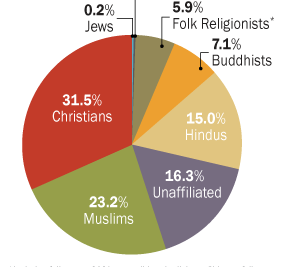
Abortion Defined: Understanding Its Meaning and Definitions

Abortion, often a topic of intense debate, is defined as a medical procedure that aims to terminate a pregnancy. It holds significant meaning in the lives of many women and has deep implications for families, societies, and legislation. Understanding what abortion means requires a thorough look into its definitions, historical context, and the complexities surrounding its practice. This article endeavors to provide a comprehensive view on various aspects of abortion, presenting readers with an in-depth understanding of its significance and societal impact.
Throughout history, the definition of abortions has evolved, shaped by cultural, ethical, and legal influences. As we explore the tumultuous terrain of abortion, we will highlight the various dimensions associated with it, including medical procedures, societal pressures, and the psychological ramifications that often accompany the decision to seek an abortion. This discourse aims to elucidate how each factor contributes to the broader understanding of what it means to define abortion in modern society.
Definition of Abortion
The definition of an abortion refers to the intentional termination of a pregnancy through various medical or surgical procedures. This can encompass a wide range of methods, from medication-induced abortions to surgical interventions that safely facilitate the expulsion of the fetus from the uterus. The clarity of the abortion defin. process lies in its purpose: to end a pregnancy prior to the point of viability, which varies but is generally considered to be around 24 weeks into the gestation period.
Medical Terminology and Context
In a medical context, the definition of abortion extends beyond simply "termination of pregnancy." It encompasses the techniques and stages involved in performing the procedure, the regulatory aspects that physicians must adhere to, and the considerations concerning a patient’s health, both physical and psychological. For medical professionals, understanding the distinctions in abortion define is crucial for ensuring patient safety and complying with legal regulations surrounding reproductive health.
Historical Context of Abortion
Understanding the abortion def also involves delving into its rich historical tapestry. The practice itself has existed for centuries, yet societal perceptions have shifted dramatically throughout time. In ancient times, various methods of abortion were utilized, often reflecting the cultural and social values of the period. Historical texts indicate that women have always sought ways to terminate unwanted pregnancies, marking the complexity of reproduction as a central aspect of women's health.
Legislation Through Time
In the more modern era, particularly from the 19th century onwards, regulations surrounding abortion began to solidify, leading to significant legal battles and the establishment of laws that govern its practice. The criminalization of abortion in many jurisdictions sparked movements advocating for women's rights and reproductive freedom. This evolution of thought and legislation has significant implications for how abortion is defined today.
Types of Abortion Procedures
When considering types of abortion procedures, it’s important to differentiate between two main categories: medical and surgical abortions. Each category entails different methodologies and protocols, tailored to the needs of the patient and the specific stage of pregnancy.
Medical Abortion
A medical abortion, typically performed within the first trimester, involves taking medication to induce the abortion process. Common methods include the use of mifepristone and misoprostol, which together help to terminate the pregnancy. This method is often favored for its privacy and non-invasive nature, allowing women to manage their abortion in a more personal setting.
Surgical Abortion
Surgical abortions can vary in technique, with methods such as suction aspiration, dilation and curettage (D&C), and dilation and evacuation (D&E). These procedures are generally conducted in a clinical or hospital setting under medical supervision. While surgical methods carry some risks, they are generally considered safe when performed by qualified professionals.
Reasons for Seeking an Abortion
Women seek abortions for a multitude of reasons, each nuanced and deeply personal. Common factors that lead to the decision for an abortion defined action can include financial instability, relationship dynamics, health concerns, or even the impact of unexpected pregnancy on life plans.
Personal and Societal Influences
Understanding why women pursue abortions necessitates considering the personal and societal influences that shape these choices. For instance, societal stigma surrounding unplanned pregnancies can lead women to seek abortions as a means of societal conformity. Furthermore, access to reproductive health education plays a pivotal role in informing women's decisions regarding their pregnancies.
Medical and Psychological Considerations
When evaluating the medical and psychological considerations involved in abortion, it is essential to recognize not only the physical aspects but also the emotional and psychological implications. Medical professionals emphasize the importance of mental health support before and after the procedure.
Physical Health Risks
While most abortions are safe when conducted by qualified providers, there are inherent risks associated with any medical procedure. Potential complications can include infection, heavy bleeding, or incomplete abortion. However, understanding these risks is beneficial in mitigating them through proper medical guidance.
Psychological Impact
On a psychological level, women may face a range of emotions following an abortion, from relief to regret. Counseling and support services are critical in helping women navigate these feelings. The acknowledgment of emotional responses to an abortion experience demonstrates the importance of holistic approaches to reproductive health.
Legal and Ethical Aspects
The conversation surrounding abortion define cannot exclude the legal and ethical dimensions integral to the discourse. Abortion laws vary widely across different states and countries, impacting accessibility and the autonomy of women. Legal battles have frequently centered around the rights of women versus the rights of the fetus, prompting ongoing debates about morality and legality.
The Role of Activism
Activism plays a vital role in advocating for reproductive rights and shaping public perception of abortion. Organizations and movements work tirelessly to ensure women have access to safe abortions and to combat the stigma associated with the decision. Additionally, the dialogue surrounding ethical considerations continues to evolve, influenced by cultural shifts and ongoing research.
Stigma and Societal Views
The stigma surrounding abortion is a critical barrier many women face when considering this option. Misconceptions and societal judgments can lead to feelings of shame and isolation, affecting a woman’s mental health and support system. The need for open, honest discussions about abortion is vital to combat these stigmas.
Changing Tides of Public Perception
While stigma remains a formidable challenge, societal views on abortion have been shifting. Increased awareness and education regarding reproductive health have led to more supportive environments for women to make informed choices about their bodies. As communities engage in dialogue, the understanding and acceptance of abortion continue to progress.
Conclusion
Understanding what abortion means, entails examining a multifaceted issue that affects countless lives globally. Through its various definitions and implications, the discussion around abortion remains vital in advocating for women's rights and health. The significance of abortion defined cannot be overstated as it encapsulates the legal, medical, ethical, and societal contexts that play a pivotal role in contemporary discussions. It is essential for society to continue evolving in its understanding, ensuring that women facing these decisions are met with compassion, respect, and comprehensive support.
Did you find this article helpful? Abortion Defined: Understanding Its Meaning and Definitions See more here Education.
Leave a Reply






Related posts